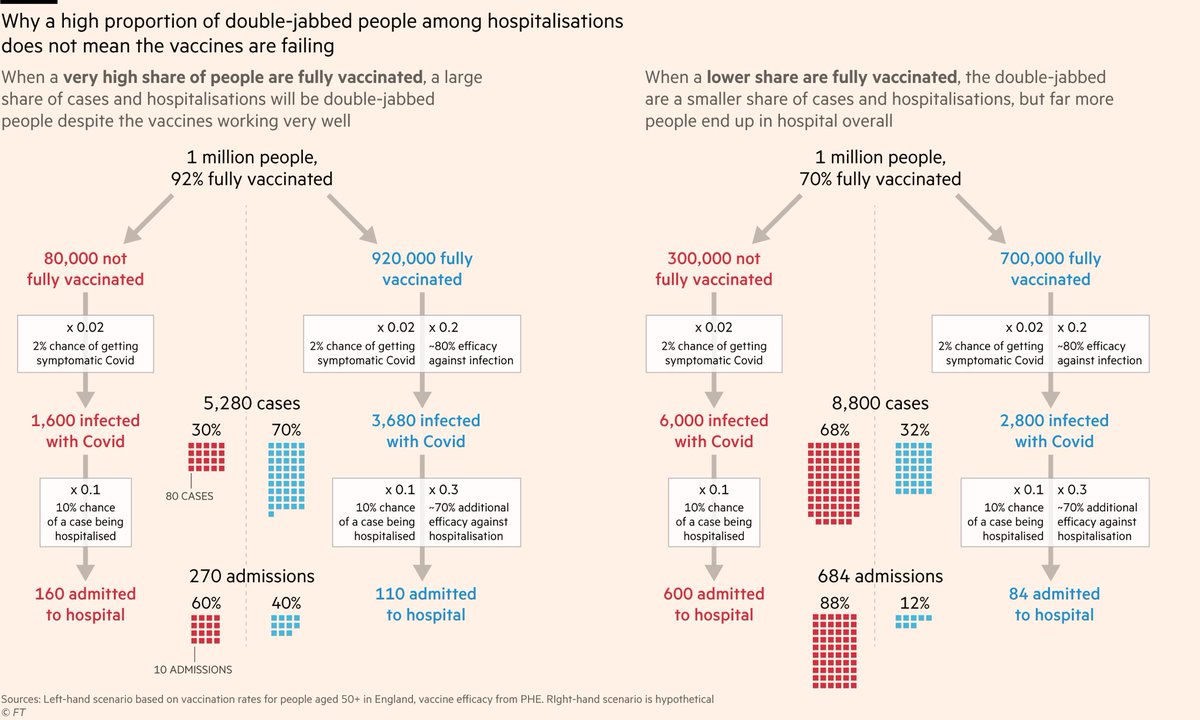
NEW: lots of attention on ONS Infection Survey today, but some confusion over how it should (and should not) be used to asses whether England’s fall in cases is "real"
Quick thread:
Most attention has gone on ONS “% of people testing positive” metric showing a continued rise
Quick thread:
Most attention has gone on ONS “% of people testing positive” metric showing a continued rise

But "testing positive" is a lagging indicator of cases. It estimates how many *have* Covid today, not how many are *catching it* today.
Fortunately, ONS has re-introduced its incidence data (blue line), which is a much better yardstick for cases, though always 2 weeks old 😩.
Fortunately, ONS has re-introduced its incidence data (blue line), which is a much better yardstick for cases, though always 2 weeks old 😩.

So how to resolve issue of one lagging indicator, and one that’s 2 wks old?
Look to Scotland, where cases peaked 2 wks before England, so ONS indicators have had time to catch up
Turns out ONS incidence fell at exactly same time as cases 🙂. ONS positivity likewise, just lagged
Look to Scotland, where cases peaked 2 wks before England, so ONS indicators have had time to catch up
Turns out ONS incidence fell at exactly same time as cases 🙂. ONS positivity likewise, just lagged

So we can apply that to England: if we adjust for the 2 wk lag for "testing positive", there’s no longer any contradiction between ONS and dashboard.
Dashboard says cases falling for the last week. ONS says they were still rising 2 wks ago, but can’t speak for the time since.
Dashboard says cases falling for the last week. ONS says they were still rising 2 wks ago, but can’t speak for the time since.

Finally, if we superimpose all three metrics for England (solid lines) on top of Scotland (dashed lines) and sync the peaks in cases, England looks to be pretty much exactly where Scotland was 2 wks ago:
Dashboard cases falling, ONS indicators on course to peak and then fall.
Dashboard cases falling, ONS indicators on course to peak and then fall.

And indeed if we add in data on Covid hospitalisations in England, we see that both new admissions and total patient numbers appear to be roughly at their peak — exactly what we would expect with cases topping out 7-10 days ago 

BUT if we’ve learned anything from last few weeks, it’s that the road at this point is anything but smooth.
Week-on-week declines in English cases have been slowing in recent days, suggesting we’ve slid down off the June/July spike, but may be settling into a more gentle decline
Week-on-week declines in English cases have been slowing in recent days, suggesting we’ve slid down off the June/July spike, but may be settling into a more gentle decline
And changing patterns of behaviour (which in turn are influenced by weather) seem to be having a big impact.
The idea that one week’s trend will continue into the following week has never felt less solid.
The idea that one week’s trend will continue into the following week has never felt less solid.
Conclusions:
• Picture right now looks promising. ONS does not contradict the view that incidence in England is currently falling
• But August could be a bump road due to behaviour and weather
• And September brings school and uni, which will further stir the pot
• Picture right now looks promising. ONS does not contradict the view that incidence in England is currently falling
• But August could be a bump road due to behaviour and weather
• And September brings school and uni, which will further stir the pot
Oh, and at the risk of stating the obvious, people should really also be following @JamesWard73 and @BristOliver for more granular updates on the situation in England
https://twitter.com/JamesWard73/status/1420823811415490567
• • •
Missing some Tweet in this thread? You can try to
force a refresh







